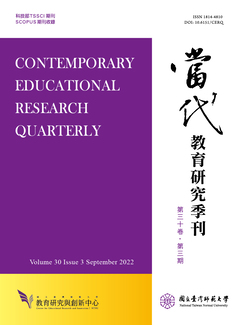

研究目的
本研究首先探討其思想淵源;其次分析其主要內涵;接著評價其優劣得失;最後闡述其重要啟示,以提供我國作為建立審美教育理論和解決審美教育問題的參考。
研究設計/方法/取徑
本文採用教育詮釋學方法,進行E. Schütz 審美教育學的探究。
研究發現或結論
Schütz審美教育學的思想淵源來自W. v. Humboldt的古典美學、F. Nietzsche的悲劇美學、M. Heidegger的藝術哲學、T. W. Adorno的批判美學和E. Fink的存在現象學。其主要內涵包括藝術的性質與審美教育的功能、藝術與真理困難的和生產的關係、藝術作為界限經驗和界限跨越者、審美教育理論與實踐的問題、審美經驗的意義與審美教育的關係。Schütz的審美教育學具有闡明藝術的性質與審美教 育的功能、指出藝術與真理困難的與生產的關係、說明藝術即界限經驗和經驗跨越者、澄清審美教育理論與實踐的問題、論述審美經驗與審美教育的關係等優點,但是其審美教育學也存在著窄化審美教育途徑為藝術教育、侷限審美教育的教材於藝術和忽略審美陶冶層面的說明等問題。
研究原創性/價值
儘管如此,Schütz的審美教育學仍然相當重要,具有肯定審美教育的重要性、指出審美教育新的方向、闡明審美教育新的功能、提出審美教育具體的理想和澄清審美教育基本問題等重要啟示,相當值得我們加以重視。
Purpose
This study investigated Egon Schütz’s aesthetic pedagogy with regard to its intellectual origins, main contents, and advantages and disadvantages. This study also adopted Taiwan (our country) as a reference for establishing theories and solving aesthetic-related problems in education.
Design/methodology/approach
This study used an educational hermeneutics approach.
Findings/results
The intellectual roots of Schütz’s aesthetic pedagogy lie in Wilhelm von Humboldt’s classic aesthetics, Friedrich Nietzsche’s tragic aesthetics, Martin Heidegger’s philosophy of art, Theodor Adorno’s critical aesthetics, and Eugen Fink’s existential phenomenology. Its main contents include characters in art and the functions of aesthetic education, the difficult and productive relationship between art and truth, the nature of art as a border experience and border crosser, the theoretical and practical problems of aesthetic education, and the relationship between the meaning of aesthetic experience and aesthetic education. The advantage of Schütz’s theory is its ability to explain these themes well.
Originality/value
Schütz’s aesthetic pedagogy is intellectually impressive despite its drawbacks. It affirms the importance of aesthetic education and points us toward new directions, and functions in teaching, addresses ideals in a concrete manner, and solves basic problems. Therefore, Schütz’s aesthetic pedagogy deserves further attention.

This work is licensed under a Creative Commons Attribution-NonCommercial 3.0 Taiwan License.
Center for Educational Research and Innovation, National Tawain Normal University
162, Ho-Ping East Rd, Sec. 1, Taipei, Taiwan | Tel:+886-2-7749-3670 | E-mail: cerecerq@gmail.com
CERI | NTNU | E-mail Alerts | Open Journal System
© 2014 CERI-NTNU
